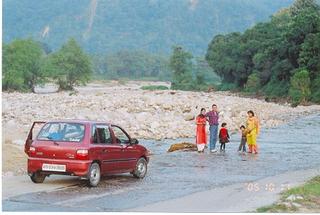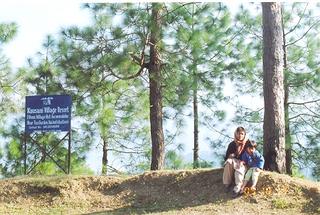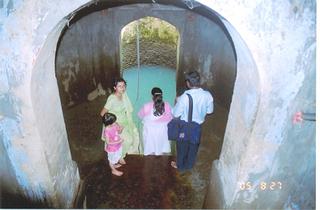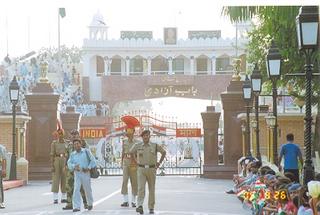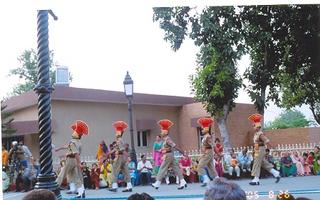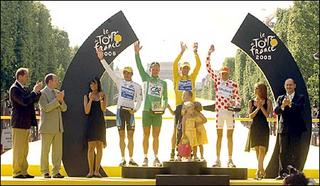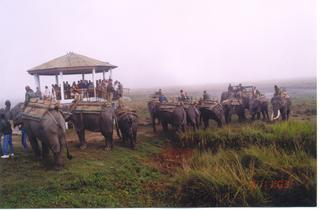There are many tourist locations around Delhi and you are often required to catch a bus for traveling out of Delhi. But here comes the dilemma -- should you take a private bus or a roadways bus (govt. buses)! Traveling by private bus should be avoided at all cost. Now, where do you go to catch a roadways bus as there are 3 ISBTs in Delhi which are located wide apart. Delhi is full of touts who are out there to exploit innocent tourists. We had all learned it the hard way by getting duped at least once. It starts with the autowalas. If you ask them to go to ISBT, they will quiz your knowledge by asking which ISBT. Local word used for ISBT is Bus Adda. If you can not answer that then they know that you a sitting duck and may take you to private operator. To avoid trouble, you need to tell specifically that I want to go say Kashmere Gate Bus Adda. There are many shops outside New Delhi Station, the so called Tourist Information Bureaus. They constitute the second line of touts. They book tickets for private buses and hotels. You will find cheaper and better hotels if you take the help of a man puled ricksaw. There is no published price of bus fares for private bus and so the price you pay depends on your knowledge of fare and bargaining power. So it is always better to go to ISBTs and catch a roadways bus that keeps running almost 20 hours. But you need to know which ISBT you should go.
During 1998-99, I was employed in Delhi with a private organisation where I had to travel extensively out of Delhi. Fortunately, around that time, the Transport Deptt. of Delhi had published a list of buses from diferent ISBTs in leading newspapers. I had preserved that piece of information which had always been very useful for me. As now I have my own webspace, I feel it will be nice to share it with you all.
ANAND VIHAR ISBT (VIVEKANANDA)
(Buses mostly to UP and East Uttaranchal areas)
Almora
Allahabad
Bulandshahar
Bareilly
Bageswar
Dharchula
Etawah
Farukhabad
Ghazipur
Gajraula
Hathras
Hamirpur
Haldwani
Jhansi
Kanpur
Kashipur
Kalagarh (also from Kashmere Gate ISBT)
Lucknow
Lohaghat
Mainpuri
Moradabad
Nainital
Nagina (also from Kashmere Gate ISBT)
Pithoragarh
Pilibhit
Ramnagar
Rudrapur
Ranikhet
Tanakpur
Varanasi
KASHMERE GATE ISBT (RANA PRATAP)
(Busses mostly to North Haryana, HP, Jammu, Punjab and West UP, west Uttaranchal areas)
Guhana
Sonepat
Panipat
Karnal
Nahan
Kurukshetra
Ambala
Chandigarh
Kalka
Hoshiarpur
Patiala
Bhatinda
Ludhiana
Jallandhar
Amritsar
Katra
Jammu
Moga
Shimla
Dharamsala
mandi
Kulu
Manali
Pilani
Rohtak
Jind
Sangrur
Bhiwandi
Hissar
Sirsa
Ganganagar
Meerut
Saharanpur
Muzzafarnagar
Rurki
Rishikesh
Dehradun
Haridwar
Kotdwar (via Meerut)
Dhampur (via Meerut)
Nagina (via Meerut)
Kalagarh (via Meerut)
And all other routes towards GT Karnal Road, Bahadurgarh Road and Saharanpur Road
SARAI KALE KHAN ISBT (near Ashram)
(Busses to Hrayana towards Faridabad side and Gurgaon side, MP)
Ghaziabad
Hapur
Gurgaon
Sohna
Rewari
Narnaul
Sikkar
Alwar
Kotputli
Jaipur
Ajmer
Jodhpur
Chittor
Bhilwara
Udaipur
Kota
Faridabad
Palwal
Ballabhgarh
Agra (also runs from Anand Vihar)
Aligarh
Gwalior
Mathura
Vrindavan
And all other routes towards Gurgaon and Mathura Road.
Dos and Don'ts:
Here is a list of Dos and Donots from that list. I had added a few.
1) If you can not find the place you are going, check a map. You will get a general direction based on the location and go to that ISBT. Even if you land in the wrong ISBT, do not worry as DTC runs city bus service between these ISBTs. These buses starts from inside the ISBTs.
2) For God's sake DO NOT EVER GET INTO PRIVATE BUSES. The advertisement by Transport Deptt of Delhi rightly says You May Not Reach Your Destination'. Believe me, it is 100% true. The private bus service is highly unorganised and so there is no control.
3) Do not fall for luxury buses or AC buses of private operators. Many agents moves around inside the ISBT, manily around ticket counters and gates looking for innocent looking victims. I can assure you that if you fall for them you are guaranteed a horrible experience you will never forget. We all had gone through it and is so awareing you. Further, I have not seen any AC private bus till now. Probably there is not any. But I have I have seen many people fighting for refund of extra AC charges. But these crookes will not return you money.
4) There is no standard fare of private bus. They charge you depending on your knowledge. But my experience is that roadways bus fare is much cheaper, e.g., the Dehradun - Delhi fare for good quality delux bus of any roadways was 170-80/- while that of khatara delux of private bus was 250/-.
4) Even autowalas may be packed. They may pretend giving you friendly advise to take you to good delux buses. They do it for commision and once they hand you over to touts they will vanish leaving you to suffer.
5) So cardinal principle is that always board a bus from inside the ISBTs. All types of buses are available -- from real khataras to Volvos. Quality of buses may not look good, but they will still make you reach your destination safely.
6) All long distance buses from Delhi leaves by 10:30 pm or maximum 11 pm. So, you should not expect to get buses after 10:30 pm.
Useful Links :
Here are some useful link in case you want to gather more information. The DTC (Delhi Transport Corporation) not only runs city bus service in Delhi, but also operates buses to almost all major tourist points to states around Delhi. Here is the link to
DTC website . There is another very useful link to find local city bus routes within Delhi. Check this out
DTC City Bus Route Finder . Want to know the auto and taxi fare in Delhi, then check this
Auto and Taxi fare Calculator . To end, here is the link on the latest mode of commuting in Delhi, the metro rail
Delhi Metro Rail .




